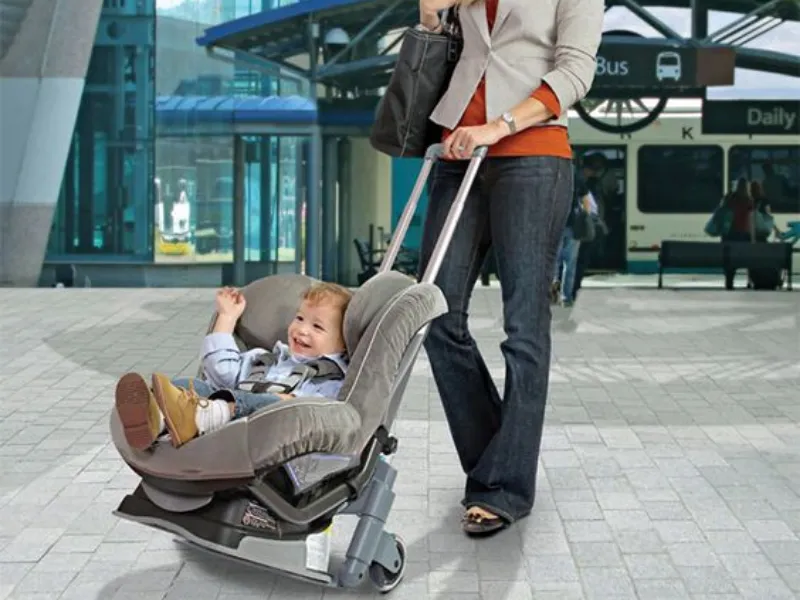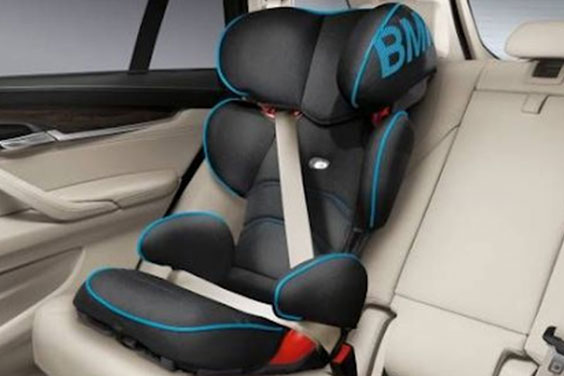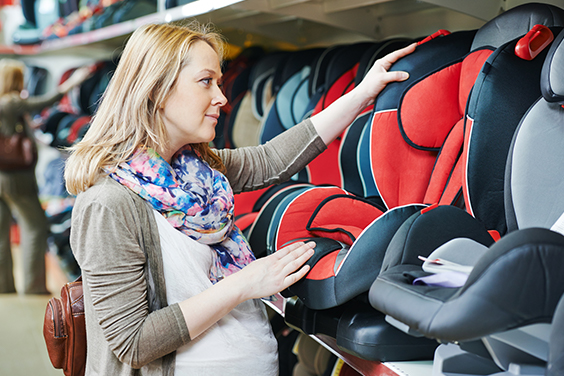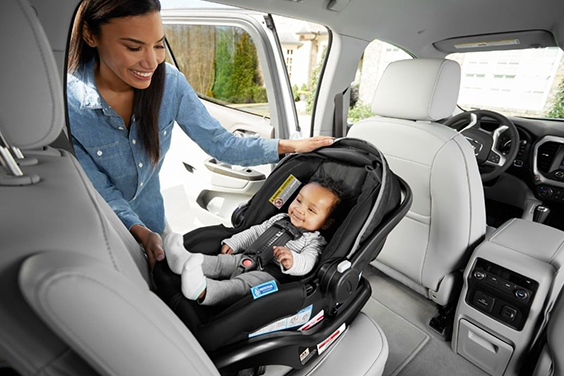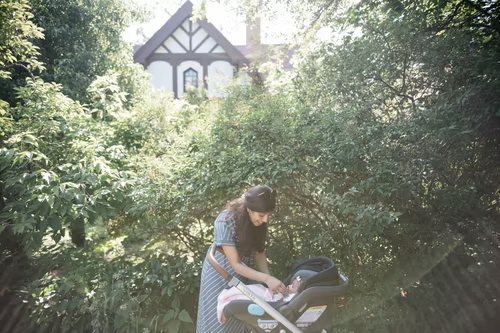Traveling with your little ones is definitely the excitement, the joy, but, it will cause inevitable chaos that can come from taking a trip with a toddler. But in the midst of all this, the question that’s probably been bugging you is, “How to travel with a car seat?”
Today, we’re going to take a deep dive into the world of car seats and travel. You’ll be armed with all the information you need, including tips, tricks, and best practices for traveling with a car seat. Believe me when I say, understanding the ins and outs of traveling with a car seat can make your journey so much more comfortable, and not to mention safer for your precious cargo.
Here’s a tidbit for you: the American Academy of Pediatrics recommends that children use a car seat or a booster seat until they reach the height or weight limit of the product. That’s a lot of traveling with a car seat, isn’t it?
And let’s be honest, you and I both know that the idea of bringing along a car seat while traveling can seem daunting at first. But, I promise, with a bit of preparation, it can be a breeze.
Understanding the Legalities: Can You Take a Car Seat on a Plane?
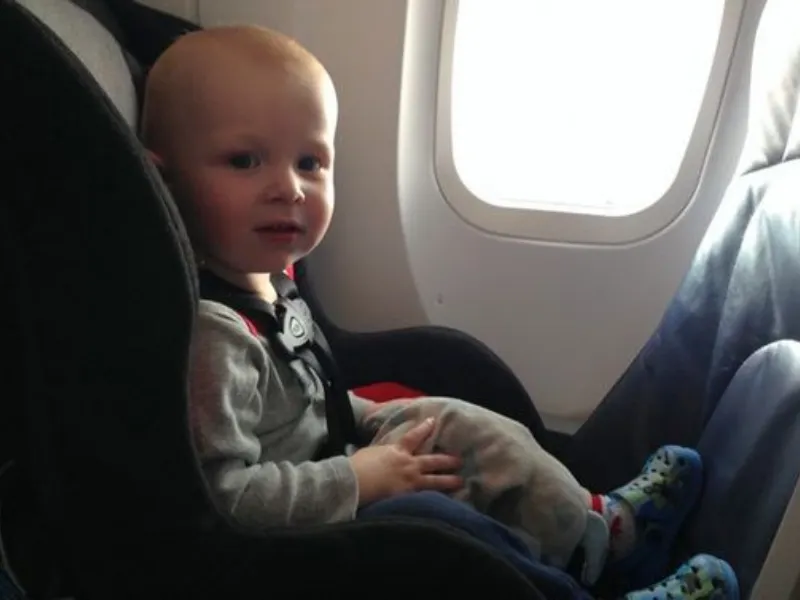
Did you know that the FAA (Federal Aviation Administration) actually recommends the use of a car seat on planes? Yes, they do! But the catch is, the car seat must be FAA-approved for aircraft use.
“So, how do I know if my car seat is FAA-approved?” I hear you ask. There’s usually a sticker on the car seat that tells you if it’s FAA-approved. This might be the perfect time for a quick car seat inspection before your trip, huh?
Also, airlines have their own rules and may require you to place the car seat in a window seat, not in the aisle or emergency exit rows. That’s something to remember when you’re booking your tickets!
And remember, if you’re traveling internationally, car seat rules can vary across borders. It’s always a good idea to check in with your airline and the relevant motor vehicle agency of the country you’re visiting. A bit of research can go a long way in ensuring hassle-free air travel with a car seat.
Traveling Internationally: Car Seat Rules Across Borders
You might be wondering “Do I need to bring a car seat when traveling internationally?” It’s a fair question and one that deserves a thoughtful answer. Every country has its own rules regarding car seats, and this includes how to travel with a car seat on planes. Some countries might not have the same standards or requirements as your home country. Your car seat that’s all stickered up with FAA-approval might not meet the regulations in another country.
So what’s a travel-loving parent to do? Well, the best option is to research. Reach out to your airline, the rental car agency (if you’re planning on renting a car), and the transportation authority in the country you’re visiting. This way, you’ll ensure you’re not just compliant with the rules, but also taking the best steps for your child’s safety.
Pro tip? If you’re renting a car, ask the rental company about their car seat options. Many offer car seats as an additional charge. But remember, you’re entrusting your child’s safety to that car seat, so make sure it’s up to snuff. And there’s no harm in bringing along your own car seat strap, just in case.
Why Should You Bring a Car Seat on a Plane?
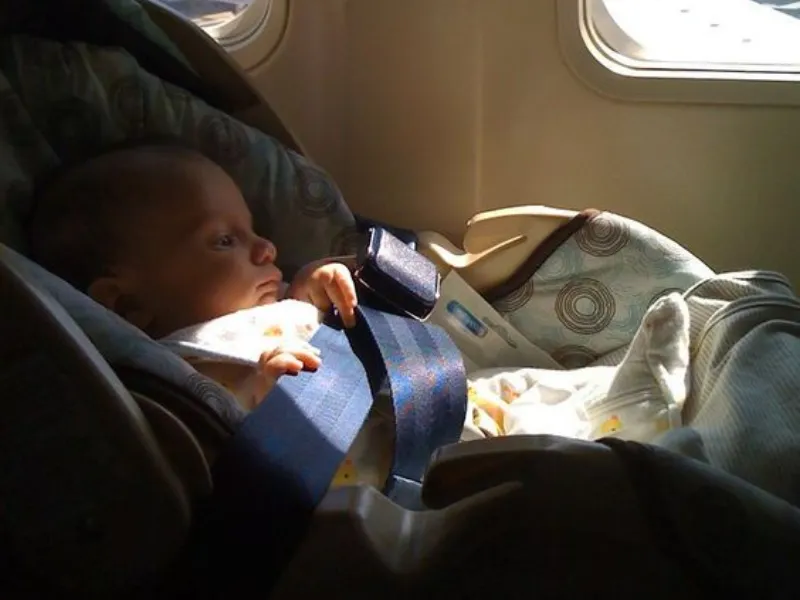
At first blush, you might think, “Is it really necessary to bring a car seat on a plane? Can’t I just hold my child?” Well, while airlines do allow children under the age of 2 to travel as a “lap child”, the FAA and American Academy of Pediatrics strongly recommend using an FAA-approved child restraint system or device.
Why? There are several benefits to bringing your own car seat on a plane.
First, your child is used to their own car seat. They’ve spent countless hours in it, on short trips to the grocery store or long journeys to visit grandma. A familiar space in a new and potentially overwhelming environment like an airplane can provide a sense of comfort and routine for your little one.
Second, safety. Airplanes have turbulence, and when they do, you’ll want to ensure your child is as safe as possible. A car seat, especially an FAA-approved car seat, provides additional security and peace of mind during those choppy times.
And third, let’s not forget that having a car seat can help ensure your child stays put. If your toddler is anything like mine, staying still is not their favorite thing. With their own car seat, they’re strapped in and less likely to try to take a walk down the aisle at the most inconvenient times.
The Disadvantages of Flying with a Car Seat
We’ve talked about why using a car seat can be beneficial, but it’s only fair to also consider the flip side of the coin. Yes, flying with a car seat has its downsides.
First off, dealing with a car seat when you’re trying to negotiate airport crowds and queues might seem like a nightmare. It’s bulky and could be tricky to manage, especially if you’re traveling alone. Plus, if you’re also bringing a stroller along, that’s another piece of baby equipment to worry about.
Then, there’s the potential issue of the car seat not fitting the airplane seat. This could be a particularly tough situation if you discover this after you’ve boarded the plane, and might cause some inconvenience to you and your fellow passengers. Not exactly the best way to start your journey, huh?
And let’s not forget the price. If your child is less than two years old, most airlines offer a complimentary lap infant ticket. By bringing a car seat, you’ll have to purchase an extra seat regardless of age which can be an additional charge to your travel budget.
But here’s a little nugget of wisdom – every cloud has a silver lining! While these issues might seem daunting, with a little forethought and planning, they are easily manageable.
How to Choose an Appropriate Car Seat for Air Travel
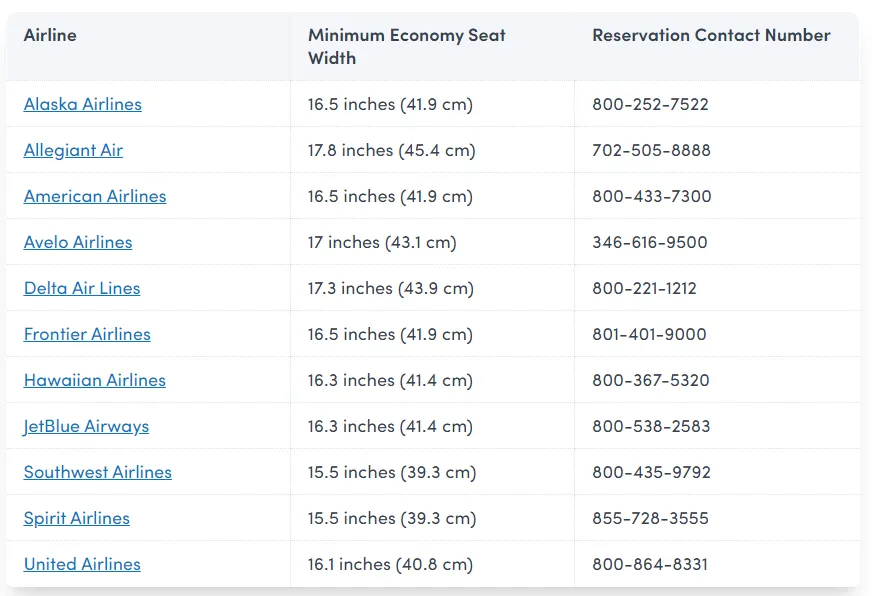
Alright, let’s get down to brass tacks and cut through the jargon. You want to know how to travel with a car seat. More importantly, you want to know how to choose the right car seat for air travel.
There’s a myriad of car seats out there – infant car seats, convertible car seats, forward-facing car seats, booster seats – you name it. The key here is to look for lightweight car seats that are FAA-approved for airline use, and ideally, ones that have a reputation for being travel-friendly.
Check the weight and dimensions of your car seat. Remember, you’re likely to be lugging this baby (no pun intended!) around the airport, so every pound counts. Lighter models will definitely be more convenient.
Then there’s the width to consider since airplane seat dimensions can vary. Most airplane seats are between 16 and 17 inches wide, while some car seats can be as wide as 20 inches – and that ain’t gonna work!
Also, just because airlines allow car seats, it doesn’t mean all staff are well-trained with car seat installation on airplane seats. It’s a good idea to become familiar with your car seat’s installation process before you leave for your trip.
Believe me, a few trial runs of installing and removing the car seat in your home will pay dividends when you’re trying to do it on a plane while also keeping an exuberant toddler entertained.
Decoding FAA Approval: What it means and Why it’s Essential
FAA approval — you’ve probably seen me mention this term a few times by now. And yes, it’s as important as I’m making it sound. But what exactly does it mean for a car seat to be FAA-approved? Let’s unravel this.
Simply put, if a car seat is FAA-approved, it means it complies with Federal Aviation Administration’s rigorous safety standards for use in an aeroplane. This is a big deal because the FAA is the grand poobah of American civil aviation. They’re the folks who set the standards for anything that flies in the sky, making sure that everything is safe and hunky-dory.
So, in the context of car seats, an FAA approval means the car seat has been tested and proved to provide a high level of protection for your child in flight. It’s like a seal of approval from some of the toughest critics around!
Having an FAA-approved car seat is not just about ticking off a box on the checklist. It’s about safety, peace of mind, and even compliance with airline policies. Purchasing and using an FAA-approved car seat could essentially save you a lot of trouble and ensure your child’s safety is not compromised.
So, where can you find this FAA approval? Look for a label on your car seat that states it’s certified for use in motor vehicles and aircraft. Now, if it doesn’t have this label, it doesn’t necessarily mean it’s not safe. However, from an airline’s perspective, no sticker usually translates to no approval.
How Can I Check If My Car Seat is FAA-approved for Aircraft Use?
Here’s the first thing you need to do: have a good look at your car seat. The FAA approval is commonly found on a sticker somewhere on your car seat along with other manufacturing details. It should specifically state that the car seat conforms to all applicable Federal motor vehicle safety standards.
Here’s the first thing you need to do: have a good look at your car seat. The FAA approval is commonly found on a sticker somewhere on your car seat along with other manufacturing details. It should specifically state that the car seat conforms to all applicable Federal motor vehicle safety standards.
If for some reason, you can’t find a label, or if the label doesn’t clearly state anything about aircraft use, turn to the powers of the internet. Look up your car seat model on the manufacturer’s website. There’s likely to be information there about whether the car seat is FAA-approved or not.
What Should I Do If My Car Seat Doesn’t Fit the Airplane Seat?
Okay, here’s the scenario. You’ve checked in your baggage, managed to lug that car seat through the airport, and you’re finally on the plane. You’re feeling pretty good about yourself. And then, whoops! You find out that your car seat doesn’t fit the airplane seat. Panic time? Not at all!
So, here’s what you do. Firstly, don’t stress. If the car seat doesn’t fit, reach out to the cabin crew for assistance. They’re trained and experienced in handling situations like these. They might be able to reassign you to a seat where the car seat can fit.
If there isn’t an available seat that can accommodate your car seat, you might need to gate check your car seat or place it in the overhead cabin for the duration of the flight. I know, not the ideal scenario, but it’s better than holding up the boarding process.
For future travels, it might be a good idea to research the average seat sizes on different airlines, or even call the airline beforehand to ask about their seat dimensions.
Here’s a fun fact: Some airlines have specific sections on their websites about traveling with children and the type of car seats that are suitable for their aircraft.
How to Transport a Car Seat at the Airport?
The million-dollar question: “how do I get this bulky car seat from the check-in counter to the plane?” Well, there are a few ways you can transport a car seat at the airport.
Enter – your new best friend – a car seat travel bag. It protects your car seat from dirt and damage and makes it easier to carry. Some even come with wheels!
Want to push the convenience factor up a notch? You might want to consider a car seat travel cart or a car seat roller. These allow you to attach the car seat to a compact cart with wheels, and presto, you can wheel your car seat around the airport!
You could also use a car seat travel strap to attach the car seat to your carry-on suitcase. Do make sure, though, that the suitcase is sturdy and can handle the weight.
Finally, consider investing in a car seat that’s specifically designed for travel. Travel car seats are lightweight, easy to carry, and often come with travel-friendly features like a carrying handle or travel bag.
What Are Some Tips For Installing A Car Seat on A Plane?
Installing a car seat on a plane may sound complex, but much like fitting a square block into a square hole, there’s an easy way to do this. But before we get into this, a quick note here. Install your car seat in the airplane seat exactly the way you’d install it in a car. The only difference? You’d use the airplane seat belt instead of the LATCH system.
Alright, now that’s out of the way, let’s get your car seat safely set up:
| Step | Instructions |
|---|---|
| 1 | Position: Install the car seat either rear-facing or forward-facing, depending on whether you have an infant car seat or a forward-facing seat for your toddler. |
| 2 | Seatbelt Path: Route the airplane seatbelt through the correct belt path on your car seat. If unsure, look for a sticker on the side of the car seat or consult the manual. |
| 3 | Fasten the Seatbelt: Buckle the seatbelt, ensuring it’s not twisted. If you’re installing a forward-facing car seat, the seatbelt should pass under the armrest. |
| 4 | Secure the Car Seat: Ensure the seat is tightly installed. It should not move side-to-side or front-to-back more than an inch when you pull at the belt path. |
| 5 | Re-check: Confirm the seatbelt is securely fastened and that the car seat is tight. If your child’s car seat has a detachable base, remember not to bring the base. The car seat should be installed without the base. |
| Preparation | Know the car seat inside and out before your travel date. Do several trial runs at home to make sure you’re comfortable installing and uninstalling it. |
Remember, the key to anything is preparation. Know the car seat inside and out before your travel date. Do several trials runs at home to make sure you’re comfortable installing and uninstalling it.
Traveling without Children: Rules about Flying with an Empty Car Seat
Got a bucket list plan to see the Northern Lights in Iceland and not plan on bringing the kiddos along? But you do plan on bringing their car seat just to make renting a car easier once you get there?
In such cases, it’s key to know that every airline has its own rules regarding flying with an empty car seat. While some airlines might allow you to bring an empty car seat on board, others might insist on checking it in.
Before anything else, make sure that your empty car seat adheres to the airline’s baggage policy. Most importantly, confirm if you can bring the car seat onboard or if it needs to be checked. Keep in mind, though, that if the flight is full, and extra seats aren’t available, the airline may be required to check the car seat, even if this isn’t your preferred choice.
Are There Any Specific Airline Policies I Should Be Aware of When Traveling with A Car Seat?
Navigating through the world of airline policies may sometimes feel more daunting than planning the actual trip. But understanding these policies, especially the ones related to car seats, is essential for a smooth and stress-free journey.
Most U.S airlines, such as American Airlines, encourage the use of car seats, and international airlines have similar policies. However, they usually specify that the car seat must be FAA-approved. Also, some airlines may require a child using a car seat to be seated at a window seat to avoid blocking the escape route in case of an emergency.
But here’s the caveat: the policies can vary from one airline to another. So scout out the information on the airline’s website, or even call their customer service hotline. Ask about their procedure for using car seats on board, their recommendations, and any tips they might have for making the process go more smoothly.
Also, be aware of the aircraft model and its layout. Airlines typically provide the aircraft model when you book the tickets, and you can check the seating arrangement to plan better.
Conclusion: Key Takeaways on How to Travel with Car Seat for Stress-Free Journeys
Traveling with a car seat may seem like an added source of stress when you’re already dealing with packing, tickets, passport control, and entertaining your children. But with the right preparation and know-how, it doesn’t have to be.
Remember, while it might be an additional item to carry, a car seat will prove to be a lifesaver in keeping your child safe and snug during the journey. Using a travel system such as a stroller-car seat combo, or a car seat travel cart, could make your trip through the airport easier. And most importantly, ensure that the car seat is FAA-approved for airline use for that added peace of mind.
As we draw to a close, think of this not as a challenge, but as an adventure. Believe me, that’s the best way to tackle any travel-related worries. And throughout your journey, remember why you wanted to travel in the first place – to create lasting memories, to spend quality time with your loved ones, and to see the world through the wide-eyed wonder of a child.
And there you have it! Everything you need to know about how to travel with a car seat. So buckle up, get on board, and prepare for takeoff – you’ve got this!
